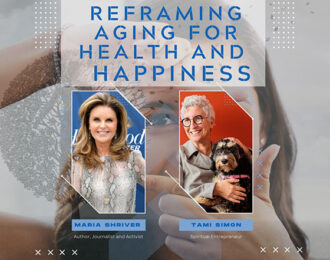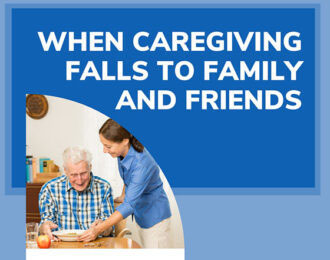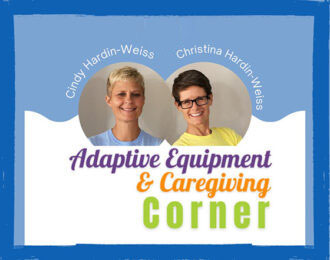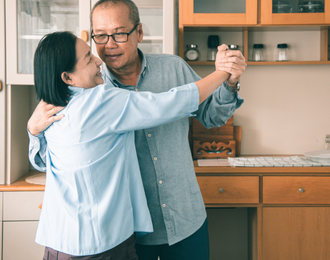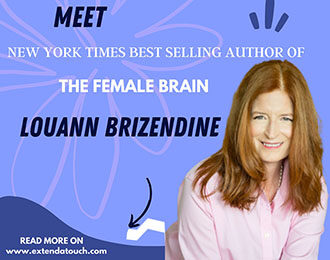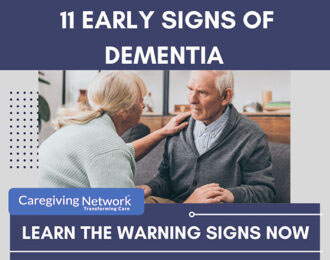How to Age Well

For the New York Times, by Tara Parker-Pope Illustrations by Craig Frazier Updated on Feb 19, 2022
Getting older is inevitable (and certainly better than the alternative). While you can’t control your age, you can slow the decline of aging with smart choices along the way. From the foods you eat and how you exercise to your friendships and retirement goals — it all has an effect on how fast or slow your body ages. Keep reading for simple ways to keep your body tuned up and your mind tuned in. And the good news is that it’s never too late to get started.
Eat
Small changes in your eating habits can lower your risk for many of the diseases associated with aging.

Lose Just a Little Bit of Weight
Small changes in body weight can have a big impact on health risks. Losing just 5 percent of your body weight has been shown to reduce your risk for diabetes and heart disease and improve metabolic function in liver, fat and muscle tissue. That means a 200-pound person can reap big health benefits just by losing 10 pounds. While we’d all love to shed all of our extra pounds, it’s a lot easier to start with a 5 percent weight loss goal and keep it off.
Avoid Processed Meat
Processed meats like hot dogs and sausages have been salted, cured or smoked to enhance flavor and improve preservation. A number of studies have found associations between eating a lot of processed meats and poor health. A Harvard review found that eating one serving a day of processed meats like bacon, sausage and deli meats was associated with a 42 percent higher risk of heart disease and 19 percent increased risk of diabetes. But there was no increase in risk associated with eating unprocessed red meat. Notably, the culprit in processed meats wasn’t the saturated fat or cholesterol — both whole cuts of meat and processed meats contained the same amount per serving. The big differences were the levels of sodium and chemical preservatives. Processed meats had about four times more sodium and 50 percent more nitrate preservatives than unprocessed meats. Other research has implicated processed meats in a higher risk for colon cancer.
Eat Blue (And Other Colors)
While you shouldn’t plan your health around any one “super food,” there’s a lot to be said for eating blueberries. In one review of the eating habits of 187,000 male and female health workers, eating three or more servings of blueberries a week was associated with a 26 percent lower risk for diabetes. Another study found that eating the equivalent of a cup of blueberries a day lowered blood pressure. Most of us can’t eat a daily cup of blueberries. But the lesson is to add darkly colored fruits and vegetables — blueberries, cherries, spinach, and kale — to your diet. They are loaded with nutrients, fiber and carotenoids. They will also fill you up so you’re less likely to binge on junk food.
Skip Packaged Foods
The best eating strategy for aging well is to skip processed foods and beverages. That will immediately eliminate added sugars from your diet. How do you know if a food is processed? One good indicator is if it comes in a package that has to be ripped open. Think chips, granola bars, junk food, fast food, frozen pizza, etc. There are, of course, some exceptions to the rule. Some whole, unprocessed foods that are good for you come in packages by necessity. Think nuts, eggs, olive oil and milk to name a few. Try to live by the one ingredient rule. If a packaged food contains only one ingredient (ground turkey, for instance) it’s probably a reasonable choice.
Once you cut out packaged foods, you will start eating a lot more fruits and vegetables, lean meats and fish and whole grains. This is essentially a Mediterranean diet, which has been shown in numerous studies to be good for you. Harvard Men’s Health Watch offers a quick-start guide to the Mediterranean diet. If you prefer another eating plan, then go for it. Whether it’s a vegan diet based on the China Study, low-carb eating advocated by Atkins or the South Beach Diet, or trendy plans like the Whole 30 diet, all of these diets are based on whole, real foods that don’t come in packages.
What About Supplements?
Study after study has seemed to debunk the benefit of taking supplements. Fish oil is one of the most widely used supplements to combat the effects of aging, but numerous studies show it has no benefit. There’s some evidence that vitamin B12 is good for the aging brain, but most evidence suggests we get enough of it from our diet. A doctor can test you to find out if you have a deficiency. The National Institutes of Health’s Office of Dietary Supplements offers a fact sheet on B12. And lately, vitamin D has become popular, but again, there’s no strong evidence showing that we need to take more of it.
In fact, a 2010 Institute of Medicine report found that very few people were vitamin D deficient and that randomized trials found no particular benefit for healthy people to take added vitamin D. The best advice about supplements: Save the money you would spend on them and invest in a new pair of walking shoes, a gym membership, or a delicious healthy meal with your family and other loved ones. All of those are likely to do more for your emotional and physical health than a supplement.
Move
A body in motion will age better than one on the couch. Consider these tips for exercise as you age.

Exercise in Intense Intervals
High-intensity interval training is less intimidating than it sounds. It just means repeating short bursts of all-out exercise with longer periods of easy recovery. In recent years, high-intensity interval training has generated considerable attention among exercise scientists because this type of workout seems to help people of any age and any fitness level become healthier. A number of studies have shown that our bodies get more out of interval training compared with slow-and-steady exercise.
A Mayo Clinic study of 72 healthy but sedentary men and women who were randomly assigned to different exercise groups or a control group found that interval training actually led to changes in muscles at the cellular level, essentially reversing the natural decline that occurs with aging. Even if you’re not an exerciser, it’s not too late to start. In the study, older people’s cells responded more robustly to intense exercise than the cells of the young did.
A typical high-intensity workout lasts less than 15 minutes, including a warm-up and cool-down, but has been shown in multiple studies to provide health and fitness benefits that are the same as or greater than an hour or more of continuous and relatively moderate exercise.
Lift Weights
Weight lifting can help you maintain muscle mass and stronger bones as you age. And the good news is you don’t have to lift weights like a body builder to reap the benefits.
In traditional weight training programs, we are advised to first find the heaviest amount of weight that we possibly can lift one time. This is our one-repetition maximum weight. We then use this to shape the rest of the program by lifting 80 to 90 percent of that amount eight to 10 times, until our affected arms or legs shake with fatigue.
But recently scientists compared the traditional weight training with a lighter routine. The weight was set between 30 and 50 percent of each person’s one-repetition maximum, and the study subjects lifted them as many as 25 times, until the muscles were exhausted.
The scientists found that there was no difference between groups. The light weight lifters grew just as fit and strong as the heavy weight lifters. The key for both groups was to grow tired. The volunteers in both groups had to attain almost total muscular fatigue in order to increase their muscles’ size and strength.
Strength training can also help keep you from slowing down. Focus on strengthening muscles in the calves and ankles. The American Academy of Orthopedic Surgeons has some suggested exercises.
Exercise for Younger Skin
Exercise not only helps keep the inside of your body healthy, it also appears to slow and even reverse the effects of aging on your most visible organ — the skin.
After about age 40, most of us begin to experience a thickening of our stratum corneum, the final, protective, outer layer of the epidermis, itself the top layer of your skin. The stratum corneum is the portion of the skin that you see and feel. Composed mostly of dead skin cells and some collagen, it gets drier, flakier, and denser with age.
At the same time, the layer of skin beneath the epidermis, the dermis, begins to thin. It loses cells and elasticity, giving the skin a more translucent and often saggier appearance. These changes are independent of any skin damage from the sun. They are solely the result of the passage of time.
But exercise may help change that. In one study of volunteers, ages 20 to 84, researchers studied skin samples. They found that after age 40, the men and women who exercised frequently had markedly thinner, healthier stratum corneums and thicker dermis layers in their skin. Their skin was much closer in composition to that of the 20- and 30-year-olds than to that of others of their age, even if they were past age 65.
And they also found that prescribing exercise can change skin quality. Volunteers aged 65 or older began working out twice a week by jogging or cycling. After three months, scientists studied before and after skin samples. Exercise had produced distinctive changes in the skin samples, which now resembled those of 20- to 40-year-olds. And don’t forget, one of the simplest steps you can take to protect your skin is to wear sunscreen when you are exercising or spending time outside.
Find Your Fitness Age
A scientific statement from the American Heart Association points out that fitness can be a better indicator of someone’s risk for heart disease and early death than such standard risk factors as smoking, obesity and high blood pressure.
Aerobic, or cardiorespiratory, fitness is a measure of how well your body can deliver oxygen to tissues. Because that process is pervasive and essential within our bodies, it is also a “reflection of overall physiological health and function, especially of the cardiovascular system,” according to the report.
Many past studies have found that relatively low aerobic fitness is linked with a significantly increased risk for heart disease and premature death, and that being out of shape may, in fact, represent a greater risk for developing heart disease than if you have a poor cholesterol profile, Type 2 diabetes, a history of smoking or a high body mass index.
You can test your fitness age using an online fitness calculator based on data from millions of users at www.worldfitnesslevel.org. The result will either make you feel great about your health, or it may give you the dire warning that you’ve got the fitness level of someone 20 years older. To take the test, be prepared to measure your waist, note your weight and height, and take your resting pulse rate.
Think
Aging well means taking care of both the body and the mind. Most of what we do to keep our bodies fit is also good for the brain.
Dance Like No One’s Aging
Learning while moving may be a potent way to slow the effects of aging, strengthening both the body and the mind at the same time. One study compared the neurological effects of folk dancing with those of walking and other activities.
During the research, 174 healthy people in their 60s and 70s, most of whom were sedentary, agreed to undergo tests of their aerobic fitness and mental capacities, including processing speed and a brain scan with a sophisticated M.R.I. machine. Then the participants broke off into activity groups that included brisk walking three times a week, a program of gentle stretching and balance work and a dancing group.
For the dance group, men and women showed up to a studio three times a week for an hour and practiced increasingly intricate country-dance choreography.
Each participant learned and alternated between two roles for each dance, increasing the cognitive challenge. After six months, brain scans of the dancing group showed improvements in the part of the brain involved with processing speed and memory. Notably, almost everyone in the study performed better on thinking tests whether they took part in the walking, stretching, or dancing intervention. But the cognitively challenging dance appeared to have the biggest effect on the brain, suggesting that activities that involve moving and socializing have the potential to perk up an aging brain.

Tap Into Your Inner Artist
Art can inspire an aging body and mind. Activities as diverse as music, dance, painting, quilting, singing, poetry writing, and storytelling add meaning, joy, and a vibrant sense of well-being to the lives of older people.
Evidence of the benefit of art for aging comes from the Creativity and Aging Study, a controlled study sponsored by the National Endowment for the Arts. The study sorted active seniors aged 65 and older into an intervention group and a control group. The control group maintained its usual activities — the only difference was regular checkups with the study researcher.
The intervention group was assigned to an intensive community-based art program, conducted by professional artists. The lucky participants took up painting, creative writing and poetry, jewelry making, pottery and singing in a chorale. They met weekly for art instruction and attended concerts and art exhibits.
Over the course of the study, some striking trends emerged. While everyone in the group obviously continued to age, the people in the arts programs seemed to be aging more slowly. Overall, the health of participants in the arts program stabilized, compared with declines in the control group. Compared with the control group, they used less medication, were less likely to fall and had fewer doctor visits.
Why would creating art make a difference to health? One reason may be the sense of control one feels during the creative process. Art projects are also sustaining — you come back to them again and again. The artists teaching the programs described how the participants were exhilarated by the process and they were motivated to continue after each creative endeavor.
So, what does this mean for you? If you want to improve your chances of aging well, consider exploring your inner artist. Sign up for that pottery class you’ve always wanted to take. Join a creative writing seminar. Take up photography, knitting or painting, and join a group of fellow artists to improve your social network and to share with others the exhilarating feelings of creating art.
Try Yoga and Meditation
Studies have found that people who run, weight train and dance have a lower risk of developing dementia than people who are not physically active at all. But if you don’t have the ability to take part in vigorous activity, there’s another option. A weekly routine of yoga and meditation may strengthen thinking skills and help to stave off aging-related mental decline.
One study compared people who took part in yoga with a group doing mental exercises as part of a brain-training program. The yoga participates spent an hour each week learning Kundalini yoga, which involves breathing exercises and meditation, as well as movement and poses.
The researchers chose this form of yoga largely because people who are out of shape or new to yoga generally find it easy to complete the classes.
The yoga group also was taught a type of meditation known as Kirtan Kriya, which involves repeating a mantra and finger movements, and asked to meditate in this way for 15 minutes every day. The total time commitment to either yoga and meditation or brain training was equivalent for both groups.
After 12 weeks, those who had practiced yoga and meditation showed improvements in their moods and scored lower on a scale for potential depression than the brain-training group. They also did better on a test of visuospatial memory, a type of remembering that is important for balance, depth perception and the ability to recognize objects and navigate the world. In reviewing the brain scans, researchers found those who had practiced yoga had developed more communication between parts of the brain that control attention, suggesting a greater ability now to focus and multitask.
Connect
Staying in touch with family and friends — and forming new relationships — can keep you healthier longer and may add years to your life.

Strengthen Social Ties
Make friends. Volunteer. Join a club. Stay connected. That is some of the most important advice you’ll ever get about aging well.
A large body of scientific research shows that social interaction — having strong, happy relationships with family, friends, and community members — is an important factor in good health and longevity. Researchers who studied 7,000 men and women in Alameda County, Calif., found that people who were “disconnected from others” were about three times more likely to die during the nine-year study than people with strong social ties.
And here’s an amazing fact about your friendships — they can compensate for your bad habits. Research has shown that people with close social ties who had unhealthy habits like smoking and lack of exercise actually lived longer than healthy people who were more isolated. Obviously, friendship can only go so far. It’s better to have healthy habits and friendships. On average, people with healthful lifestyles and close relationships live the longest. And friendships can get you through the inevitable health setbacks that occur with aging.
A study of 2,320 men who survived heart attacks, found that those with strong personal connections were far more likely to stay alive over the next three years of follow-up. A number of other studies have shown the same trend. In one report of adults with coronary artery disease, people who were socially isolated had nearly three times the death rate compared with those with strong relationships.
Why are close friends and family ties good for us? They give us emotional support that can help us cope with stress. They can be a positive influence, helping us create healthy habits. (If your friends don’t smoke, you probably don’t either.) Studies show friendships give us higher self-esteem, greater empathy for others and make us more trusting and cooperative. And perhaps most important: As we age, our friends and family give us a sense of purpose and a reason to keep getting up in the morning.
Keep Working
To retire or not to retire? Studies show that people who keep working well into their 70s and beyond tend to have better health and stay more socially connected. But it’s tough to parse out whether healthy people tend to keep working or whether work tends to keep us healthy.
Even so, most research supports the idea that staying busy, maintaining social connections, and finding meaning and purpose in your daily routine are all part of healthy aging. Studies also suggest that the type of work matters. If you find work fulfilling and enjoy the company of your colleagues, you should consider sticking with it. If your job is backbreaking or high stress, consider checking out around retirement age — but make a plan for your second act. Volunteer or find paid work somewhere that will keep you active, engaged and give you a reason to get up in the morning.
Retirement itself isn’t a bad thing. Retiring after years of work can feel like a heady vacation at first. But eventually, not working can take a toll on mental health. One study found that the negative effects of retirement — defined as a range of depressive tendencies (such as lack of appetite, lapsed concentration, fatigue and so on) to clinical depression — start to appear after the first few years of ceasing to work.
The main benefit of work may be the social network it offers. A Syracuse University study found that people who continued to work past retirement age enjoyed an increase in the size of their networks of family and friends of 25 percent. The social networks of retired people, on the other hand, shrank during the five-year period. You don’t need to collect a paycheck to reap the health benefits of work. One study of school volunteers over age 50 found that volunteering was linked with better physical health and cognitive gains from interacting with children.
Live Well
Nothing can guarantee you a longer life, but there are a few simple practices that will improve your odds of aging well.

Stay Out of the Sun
Most sun damage occurs in our youth, but it makes sense to cover up and avoid excessive sun exposure at any age. Other research shows that for light-skinned people, slathering on sunscreen really does prevent or at least delay wrinkles.
Take Your Meds
An extraordinary number of people don’t take their prescribed medications. Studies show that 20 percent to 30 percent of medication prescriptions are never filled, and that approximately 50 percent of medications prescribed for chronic diseases are not taken as prescribed. Many people who fill their prescriptions only take half the prescribed dose. This lack of adherence is linked to an estimated 125,000 deaths and at least 10 percent of hospitalizations.
Some research has tried to figure out who is most likely to take their meds and who is not. People who have been in a job or home for only a short period of time are at higher risk of not taking their medications correctly. Social support is also a factor. People who live alone or are unmarried are more likely to skip medications or not fill prescriptions. College students and people over 80 are also less likely to follow doctor’s orders.
But here’s the bottom line: If you’ve gone to the trouble to visit a doctor to check on your health, why not follow through? If you’re having trouble paying for it, talk to your doctor. Often, they can give you samples, coupons or have a hospital social worker contact the drug company to see if you qualify for an assistance program. Fill your prescription, take your meds, and put yourself on a path toward better aging.
Pick a Car for Aging Well
Driving allows an aging person to maintain independence, but it’s important to recognize that aging can affect your driving. Arthritic hands may struggle with small buttons or gripping the wheel. Getting in and out of a car with bucket seats or one that’s low to the ground can be tough on an aging body.
The American Automobile Association has created a very useful interactive guide to help older drivers identify the makes and models of vehicles within various price ranges that may best suit their particular issues.
At SeniorDriving.AAA.com/SmartFeatures, drivers can use drop-down menus to choose among categories like diminished vision, limited upper body range of motion, short stature or overweight, and decreased leg strength.
For those with various vision problems common among older people, for example, features like a high-contrast instrument panel with large number and letter displays, an auto-dimming rearview mirror and glare-reducing side mirrors can enhance driver safety.
Balance Train to Avoid Falls
Falls are the leading cause of injury among Americans over age 65. Each year, nearly one-third of older adults experience a fall, and 20 to 30 percent of them wind up with injuries ranging from broken teeth to broken hips. Falls and their accompanying serious and less serious injuries can precipitate a cascade of medical problems, the onset of severe disability, and the end of independent living and the beginning of round-the-clock care.
First, you should improve your fitness and balance to minimize your chance of falling. Then you should plan for the right way to fall.
Balance training has been shown to reduce fall risk by 50 percent. Talk to your doctor about your risk and work with a trainer, therapist or take an adult fitness class to improve balance. Exercises like tai chi have been shown to improve balance. Other balance exercises include walking backward and sideways. Walk on just your heels and then your toes. Practice standing from a sitting position without using your arms to push yourself up. If you do fall, you can plan for the right way to do it.
Protect your head. If you find yourself falling, pivot to your side and tuck in your head.
Avoid FOOSH: The acronym stands for “falling onto outstretched hands.” If you do that, all the force of impact will be concentrated there, raising the risk of breaking your wrist. You similarly don’t want to come crashing down on your knee so you break your kneecap or do that maneuver where you kind of pedal with your feet to catch yourself, which can lead to broken bones in your foot and ankle.
Aim for the meat, not the bone: If you feel yourself falling, bend your elbows and knees and try to take the hit on the fleshiest parts of your body, like the side of your thigh, buttocks, and shoulder.
Don’t fight the fall. If you can catch yourself, do. But if you’re going to fall, it’s better to just roll with it rather than fight it as paratroopers do.
Check your house for potential hazards (an occupational therapist can help you with this). And pet lovers need to be mindful that their furry friends are a major risk factor for falls. Dogs and cats cause more than 86,000 falls requiring emergency room care each year. Man’s best friend is the main culprit: Dogs are responsible for seven times as many injuries as cats, and often cause falls while they’re being walked. Be aware of the four-legged hazard in your midst as you age.
